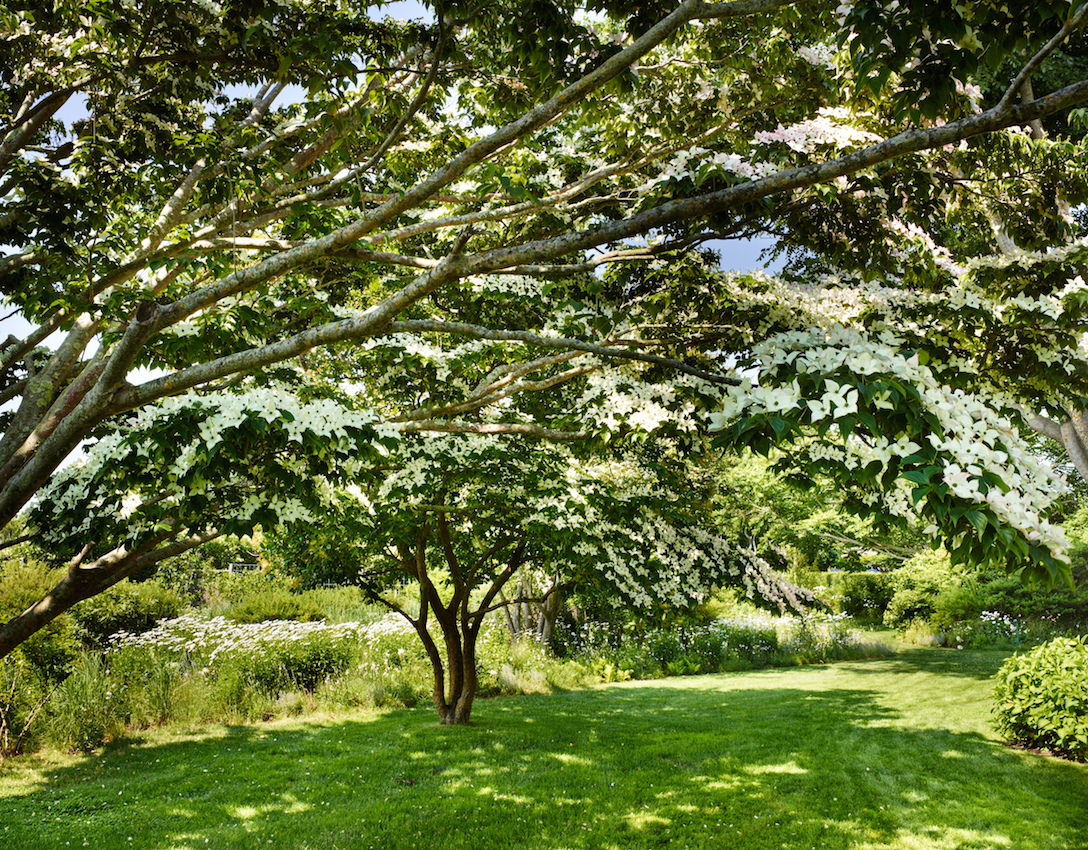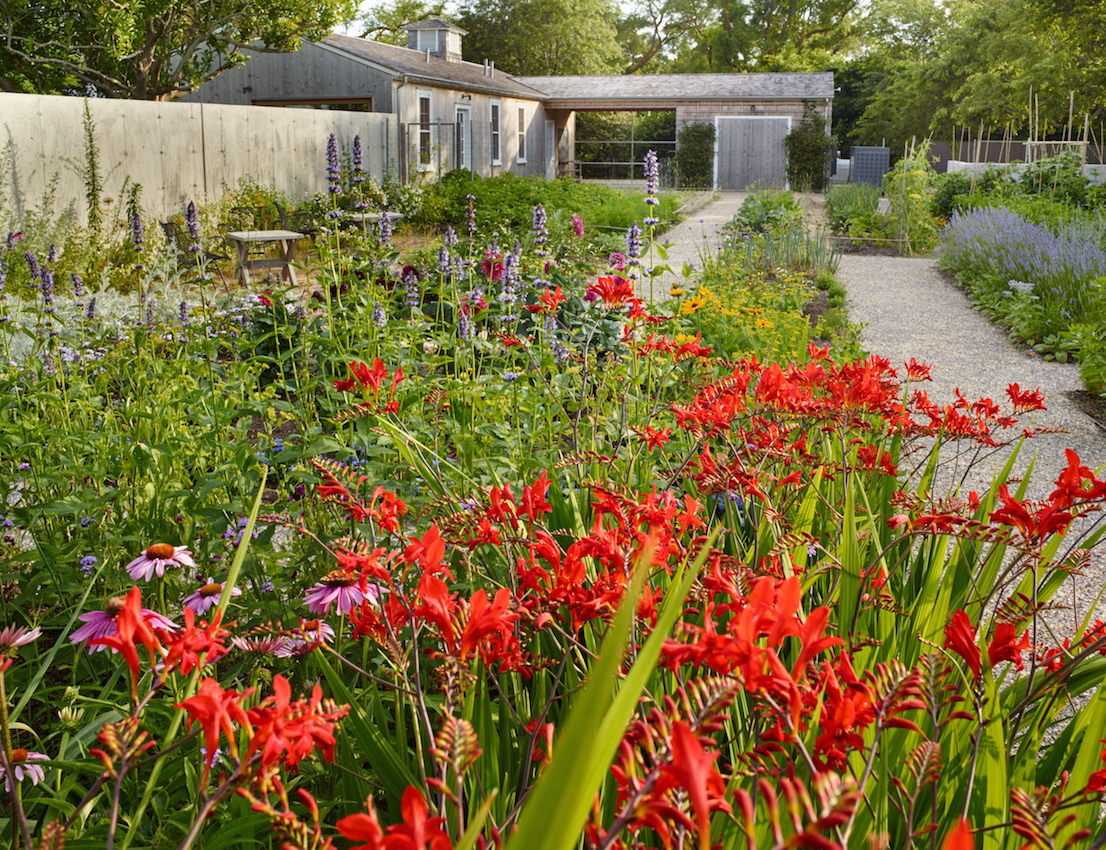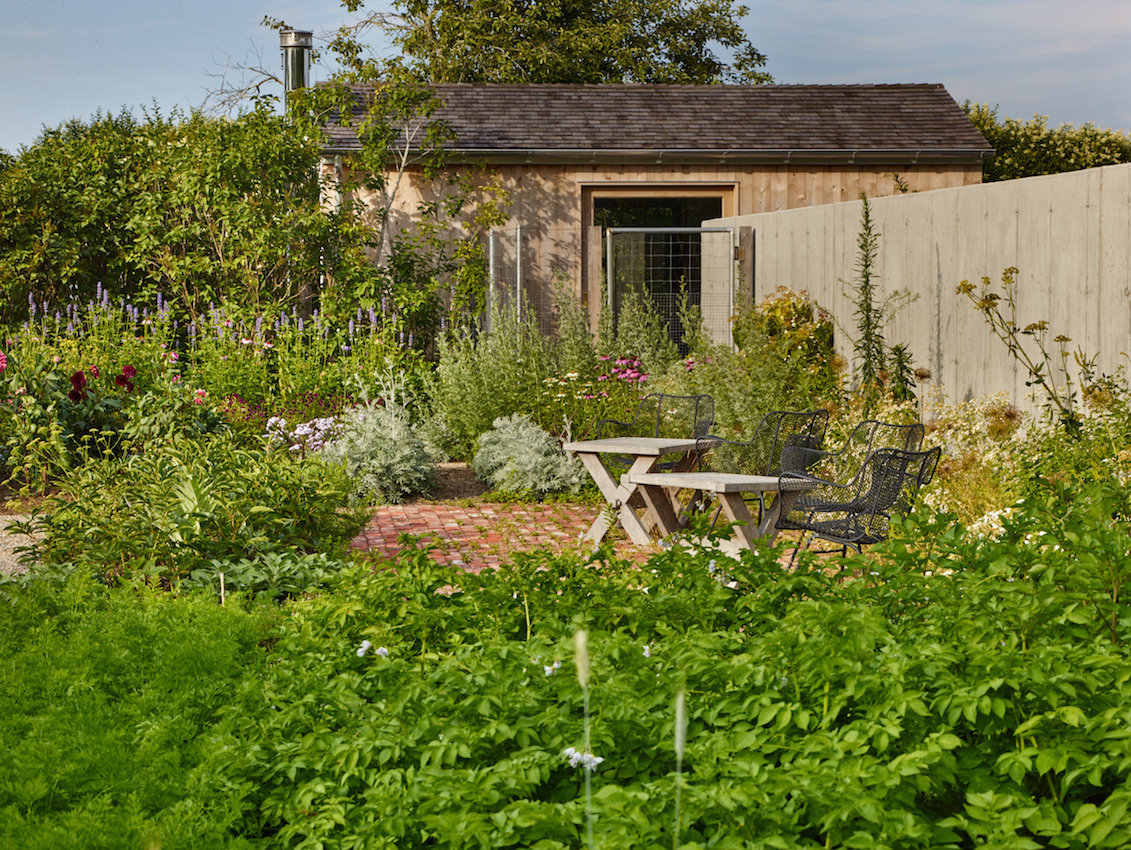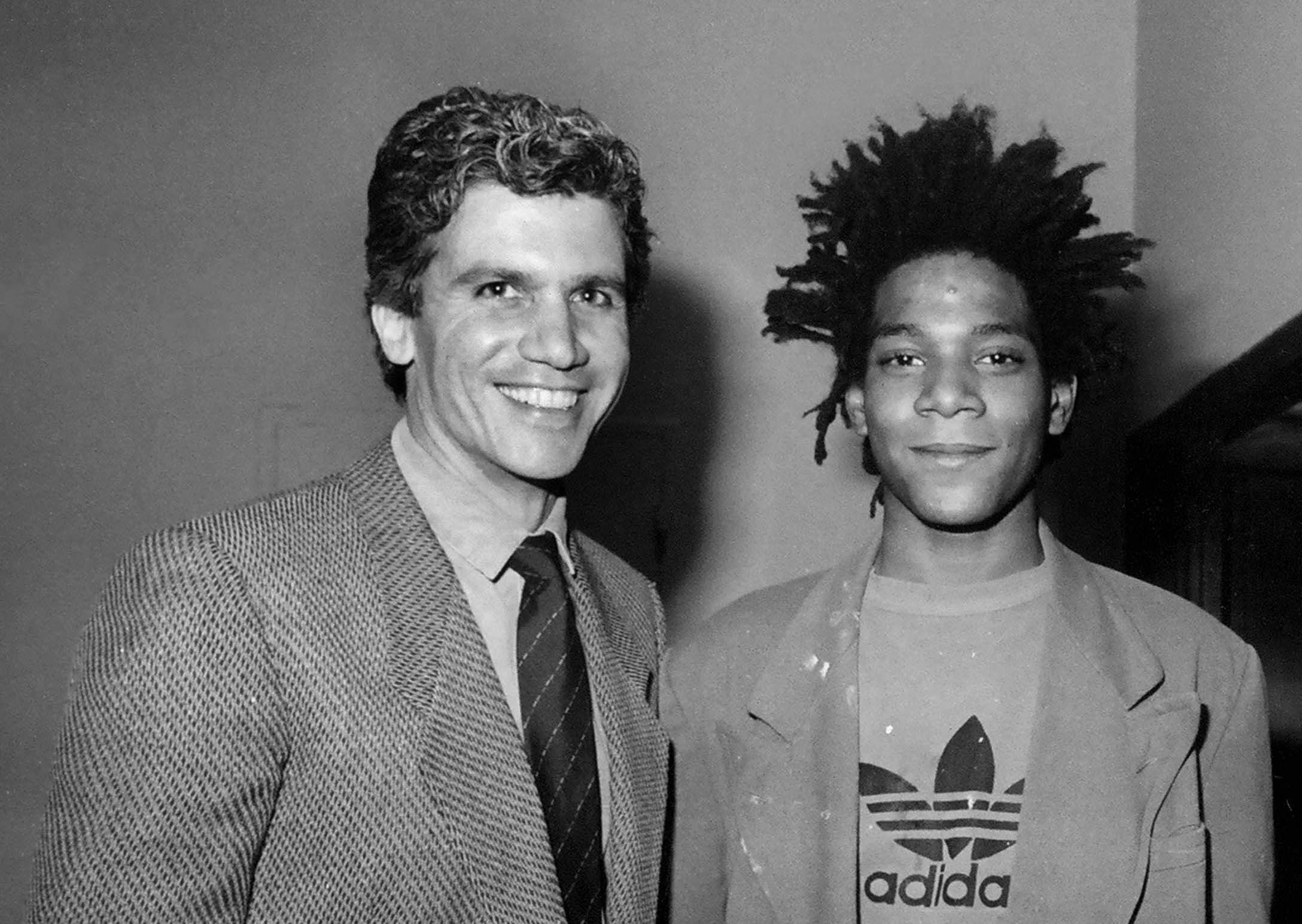Edwina von Gal has done landscape work for some of the most important homes in the Hamptons—for people like Calvin Klein and Larry Gagosian. But her hope would be for you to never notice her handiwork. Von Gal’s approach to landscape architecture will rarely include a boxed hedge or perfectly shaped topiaries. She works at creating a space that is serene and natural; a refuge, really. Von Gal, who founded her eponymous firm in 1984, will tell you that she’s succeeded if you can’t tell she was there.
But even a more naturalistic aesthetic approach can include hazardous fertilizer or methods, so in 2013 she launched Perfect Earth to promote toxin-free landscapes. We spoke with von Gal about convincing her clients to move toward environmentally minded methods and her goal this summer: to get the golf courses on the East End to follow suit.

Photo by Allan Pollok-Morris.
WHITEWALL: You’ve said that landscape design is really about what is the perfect way to make the architecture fit the place—you look at what is there and it tells you what to do. So what, specifically, do you look at when you start a project?
EDWINA VON GAL: When I start a project it is usually inspired by some architectural change that the owner is making. So it’s always connected to architecture, really. But even if it’s preexisting architecture, the first thing I like to look at is the context: What’s growing well in the area? What kind of a place is it, both environmentally and historically? Is the house contemporary or not contemporary? When is the sunrise or sunset? When are the people going to be using it? Are they indoor or outdoor kinds of people?

Photo by Allan Pollok-Morris.
With all of this, like you would with architecture, you create a program. Because number one, the client’s needs have to be met. I have three masters: I have the client, I have the architect, I have the environment. I don’t like to do things that are going to be difficult. I don’t want saddle anybody with something that requires a special level of care. Everything should really want to be there. It looks better if it does in the end.
WW: So how would modern architecture versus a more traditional architecture influence what you do?

Photo by Allan Pollok-Morris.
EG: Well, it depends on the place. Contemporary, as funny as it might sound, allows the landscape to be a little more wild. But a lot of people, when they design contemporary landscapes, go the other way and make them very much like the architecture, very structured. I feel that does not help the house settle in. I think the organization of a modern building, the logic and the mapping, really lends itself to be set off by a place that’s kind of wild, but still gentle, not being forced into forms and shapes too much.
WW: Whereas a traditional home might have a more traditional manicured lawn or garden?

Photo by Allan Pollok-Morris.
EG: Exactly. It’s a little bit more structured. It lends itself to that. Generally, the typical contemporary home has no curves. When I say “wild,” it doesn’t mean beds that are all weird shapes and all over the place. It’s really about creating a kind of a footprint that is simple and organized and the infill is to let it go and focus on trees that have great shape, great architecture of their own. Contemporary homes act as a really nice backdrop for the form of a plant and for casting shadows on a building. People don’t recognize the importance of a shadow, but it’s very powerful. How do you create a series of experiences using shade as a natural way to do that?
WW: You’ve said how in your work you often want to create a feeling of calm and refuge, which I’m sure is a challenge to design around.

Photo by Allan Pollok-Morris.
EG: I don’t know how much of it comes from knowing what it takes to make a landscape and keep it that way, but I do think that when landscapes are very tightly controlled, that kind of energy of forcing something to stay at a fixed point in time is palpable.
WW: You’ve done so many projects for people’s summer homes in the Hamptons, for instance, so I imagine a space where one can relax is quite key, as well as connecting indoor and outdoor space.
EG: Yes, and contemporary homes do that a lot more than classic homes, because the contemporary home is really just liberation from the confinement of the heat or cold because with modern air conditioning and technology you can now have expanses of glass. You couldn’t do that before, so that allows for that openness and connection to nature and the outdoors and the view.
WW: Part of the feeling of refuge and calm relates to the work that you do with Perfect Earth, because you know that your property is safe from pesticides for your family or for your pets. You founded Perfect Earth in 2013, and it seems like your clients have pretty much adopted the practice of using environmentally safe substances across the board.
EG: They have no choice.
WW: Who else do you want to reach with Perfect Earth, besides your clients?
EG: We would love to eventually address golf courses, but I can’t talk to the turf keepers because they’re under so much stress. So I need to reach the guys that are the alpha-type golfers, and say, “Okay, so you have the best irrigation systems in the world and the best golf course of any of your friends. Let’s make it toxin free.”
WW: Has the use of nontoxic materials affected any design aspects in your work?
EG: No, it really hasn’t. It does make me more conscious of plants that are problematic and there are plants that go through cycles, especially some of the non-natives and people begin to use them a lot. And when they start getting overused, they start being targets for pests. And so then there may or may not be an easy way to control that pest. If there isn’t, I probably won’t start using that plant.
WW: You have designed landscapes for people in art like Richard Serra, Larry Gagosian, David Salle, and Ross Bleckner, and Cindy Sherman is a supporter of Perfect Earth.
EG: Yes, and Lisa Phillips, who directs the New Museum, is on my board. I actually got Marilyn Minter to garden! When I started—her husband Bill is a big gardener—Marilyn said, “I don’t go outside. I have red hair and fair skin and I can’t handle bug bites and I can’t handle sun, and I don’t go outside.” So Bill and I were out there having so much fun. We made this amazing little garden for Marilyn. I mean, she inspired it. I just channel it and turn it into her language and express it in the plants.
WW: Do you feel a connection working with artist clients?
EG: They have a way of finding me through our mutual friends, and so there’s already a sort of conversation. They know that I know something about them. It just works out well.
And I worked with Maya Lin where her pieces are part of the land, and it’s a different thing. With Maya the conversation is, “Well, Maya what color do you want the grass to be?” The grass has different colors, so I raise the question that the artists don’t know exist.
WW: How did working with Maya Lin come about?
EG: I started being interested in architecture and so I really gravitated toward working with architects and understanding architecture. I studied architecture so I would be able to have a more intelligent conversation with architects. I always tried to be understanding of what they were doing and sensitive to it. That has led to some lovely collaborations working with architects like Annabelle Selldorf, Richard Meier, and Frank Gehry.
This article is published in Whitewall‘s summer 2016 Design Issue.









